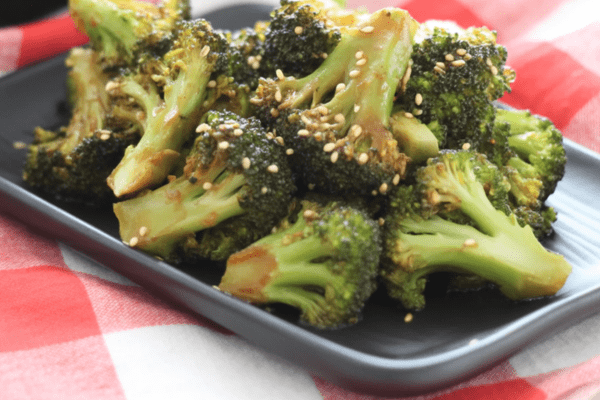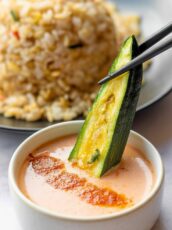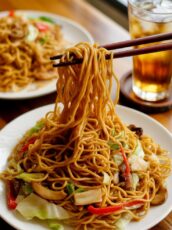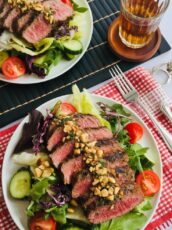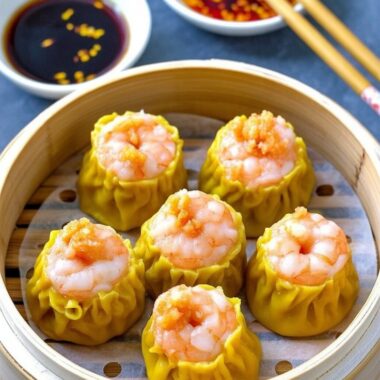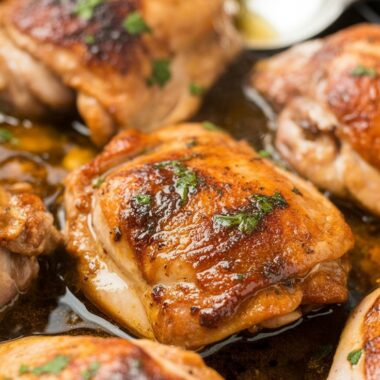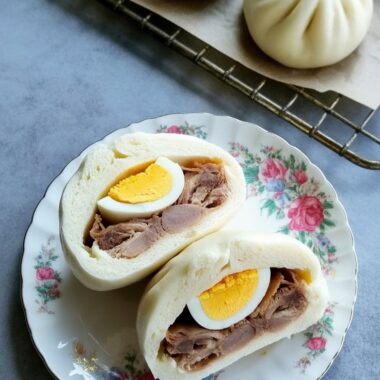There’s something incredibly comforting about a big pot of Malaysian Chicken Curry bubbling away on the stove. This curry is rich, aromatic, and full of flavor, thanks to a fragrant mix of curry spices, tender chicken, and hearty chunks of potato simmered in coconut milk. It’s the kind of dish that makes your whole kitchen smell like home.
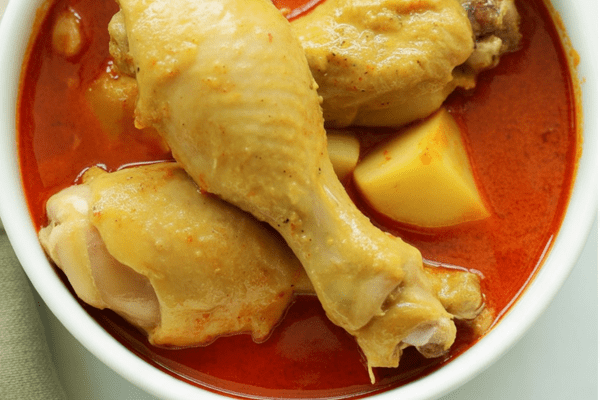
Curry Chicken That Hits the Spot
I’ve always been a fan of curries, but Malaysian chicken curry holds a special place in my heart. It’s the kind of meal that warms you from the inside out, especially on rainy days or cool evenings. Growing up, a bowl of this curry with steamed rice could turn any regular day into a celebration.
In Malaysia, this is known as “kari ayam,” and it’s one of those dishes that’s simple but bursting with character. The blend of curry powder, coconut milk, and soft-cooked potatoes creates a sauce that’s just perfect for mopping up with rice or roti.
Why This Homemade Curry Works So Well
The beauty of this curry is how easy it is to make and how well it keeps. I often make a big batch so we can enjoy it again the next day—it always tastes even better after the flavors have had time to meld.
And don’t stop at rice! Tear off a piece of warm naan, roti, or even a soft bun and scoop up that rich curry sauce—you’ll thank me later.
Ingredients You’ll Need
Here’s everything you’ll need to whip up this comforting dish:
- Chicken: I like using drumsticks or bone-in chicken thighs. They stay juicy and absorb all that curry goodness while cooking.
- Curry Powder: Make sure to use meat curry powder (not the seafood kind). It adds the signature flavor and color to this dish.
- Coconut Milk or Cream: Coconut cream makes the curry richer and thicker, while coconut milk gives it a lighter finish. Choose based on your preference.
- Onion: Diced onions form the base of the curry and add natural sweetness.
- Potatoes: They soak up all that curry flavor and also help thicken the sauce.
- Optional Additions: Tomatoes and hard-boiled eggs are great for extra richness and texture.
If you’ve got them, curry leaves and lemongrass can really lift the flavor. A handful of curry leaves tossed in while cooking gives the curry a deep, earthy aroma. Lemongrass adds a fresh citrus note that balances the richness beautifully.

Add Your Own Twist
What I love most about this dish is how adaptable it is. You can easily throw in vegetables like carrots, green peas, or cauliflower. If you want to stretch the meal or sneak in extra veg, go for it.
A few curry leaves or a pinch of mustard seeds added at the start can elevate the flavor. And don’t be afraid to use up what’s in your fridge—it’s one of those forgiving dishes that always turns out well.
How To Make Malaysian Chicken Curry
Making this curry is as simple as it gets. Here’s the step-by-step:
- Sauté the onions: Heat some oil in a large pan and cook the onions until soft and fragrant.
- Add curry powder: Stir in your curry powder and toast it for a minute to release its aroma.
- Brown the chicken: Add the chicken and coat it well with the curry base.
- Simmer: Pour in water and bring it to a boil. Add the potatoes (and tomatoes or eggs if using), then reduce the heat and simmer until the chicken is tender—about 30 minutes.
- Finish with coconut milk: Stir in the coconut milk or cream and simmer a little longer until everything is rich and well combined. Season with salt to taste.
If your curry feels too thin, just let it simmer uncovered for a bit. The sauce will thicken up nicely.
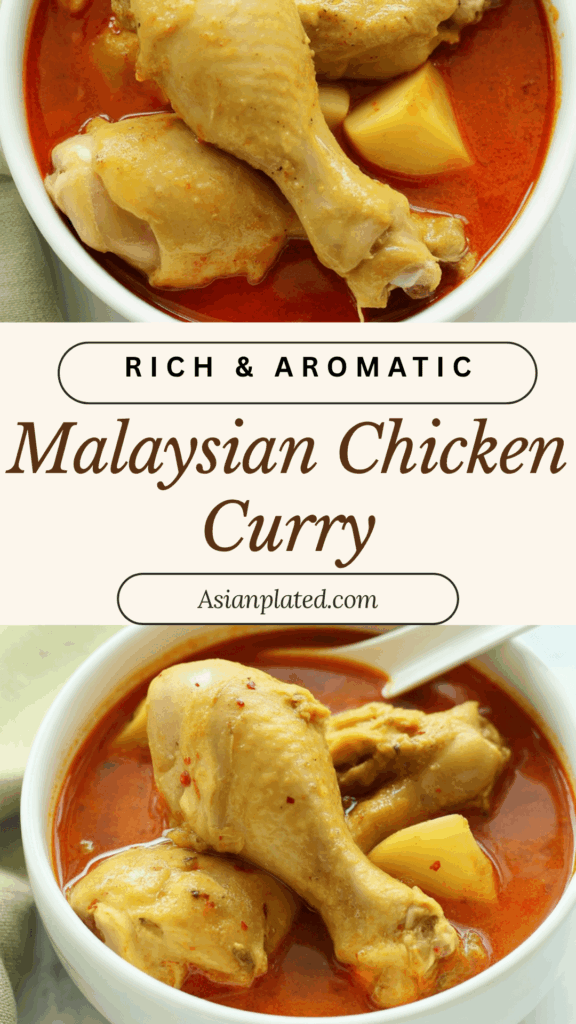
What Makes a Great Curry?
Here are a few of my secrets to a curry that tastes like it came straight from a Malaysian kitchen:
- Curry Powder: I always stock up on Malaysian brands like Baba’s or Alagappa’s when I can find them. They’ve got the perfect spice balance.
- Curry Leaves: If you have access to an Indian grocery store, grab some curry leaves. A few tossed into the oil at the start makes all the difference.
- Lemongrass: Pounded lemongrass stalks add a lovely fresh note that cuts through the richness of the coconut milk.
My Best Tips for the Perfect Malaysian Chicken Curry
- Use bone-in chicken for the most flavor. Drumsticks or thighs with skin are ideal.
- Cut potatoes into larger chunks if using russets—they tend to break down. Waxy potatoes like Yukon Gold hold their shape better.
- Simmer low and slow to allow the flavors to fully develop.
- Add the coconut milk or cream at the end, and stir gently to avoid splitting the sauce.
Malaysian Chicken Curry

This Malaysian chicken curry bursts with rich, satisfying flavors. It’s a comforting dish made with tender chicken, hearty potatoes, and fragrant spices. Using basic ingredients like curry powder and coconut milk, this recipe delivers big taste without the fuss.
Ingredients
- 2 tablespoons oil
- ½ onion, diced
- 1 oz (30g) curry powder (meat curry variety)
- 1 ½ lbs (750g) chicken thighs, legs, or a whole chicken
- 2 cups water
- 2 small potatoes (Yukon Gold preferred), peeled and cut into wedges
- 1 large tomato, cut into wedges (optional)
- 4 hard-boiled eggs (optional)
- ½ cup coconut cream or coconut milk (preferably coconut cream)
- 1 teaspoon salt, or to taste
Instructions
- Heat oil in a pot or pan over medium heat. Add the diced onions and cook until they soften and become fragrant.
- Stir in the curry powder and cook briefly until its aroma is released.
- Add the chicken, mixing well to coat it in the spices and onion. Cook for about 1 minute.
- Pour in the water and bring the curry to a boil. Lower the heat and add the potatoes. (Add the tomato and hard-boiled eggs if using.) Cover and let simmer for around 30 minutes, or until the chicken is fully cooked and tender.
- If the curry seems too thin, continue simmering uncovered until it thickens to your liking.
- Stir in the coconut cream or milk and season with salt. Mix well and serve hot with steamed rice.
Notes
- 1 ½ lbs of chicken legs equals about 6 to 7 pieces.
- Using bone-in, skin-on chicken such as leg quarters (thighs and drumsticks) adds more flavor and moisture. Boneless, skinless chicken tends to be less rich.
- If using a whole chicken, cut it into uniform pieces to ensure even cooking.
- For potatoes, larger chunks work best for starchy varieties like Russets, as they can fall apart. Waxy potatoes like Yukon Gold are preferred for their firmness.
- Simmering the curry slowly over low heat helps deepen the flavor and naturally thickens the sauce.
- Add the coconut cream or milk at the end of cooking and stir gently to prevent curdling.
Nutrition Information:
Yield: 6 Serving Size: 1Amount Per Serving: Calories: 615Total Fat: 38gSaturated Fat: 17gTrans Fat: 0gUnsaturated Fat: 18gCholesterol: 254mgSodium: 555mgCarbohydrates: 26gFiber: 2gSugar: 15gProtein: 42g
Asianplated.com, occasionally offers nutritional information for recipes contained on this site. This information is provided as a courtesy and is an estimate only. This information comes from online calculators. Although allchickenrecipes.com attempts to provide accurate nutritional information, these figures are only estimates.
Frequently Asked Questions
Can I make this in a slow cooker?
Yes, and it’s great for busy days. Just throw in everything except the coconut milk and cook on low for 4–6 hours. Stir in the coconut milk at the end.
Can I freeze it?
Absolutely. Let it cool completely and store it in an airtight container. It freezes well for up to 2 months. Thaw in the fridge overnight before reheating.
What if I want it less spicy?
Just use a mild curry powder and skip any extra chilies. You can also add a bit more coconut milk to tone down the heat.
Can I use boneless, skinless chicken breasts?
You can, but the curry won’t be as rich. If you’re using chicken breasts, try not to overcook them—they dry out quickly.
How can I make this vegan?
Swap the chicken for tofu, chickpeas, or hearty vegetables like cauliflower and sweet potato. Use vegetable broth instead of water.
How To Serve
This curry is best served hot with freshly steamed white rice, jasmine rice, or even coconut rice for extra richness. Roti or naan are perfect for dipping. Add a simple cucumber salad or pickled onions on the side to balance the heat.
How To Store Leftovers
Let any leftovers cool completely, then store them in the fridge in an airtight container. It keeps well for up to 3–4 days. To reheat, warm gently on the stovetop over low heat or microwave in short bursts, stirring in between. If it thickens too much, add a splash of water or coconut milk while reheating.
Try other recipes:


